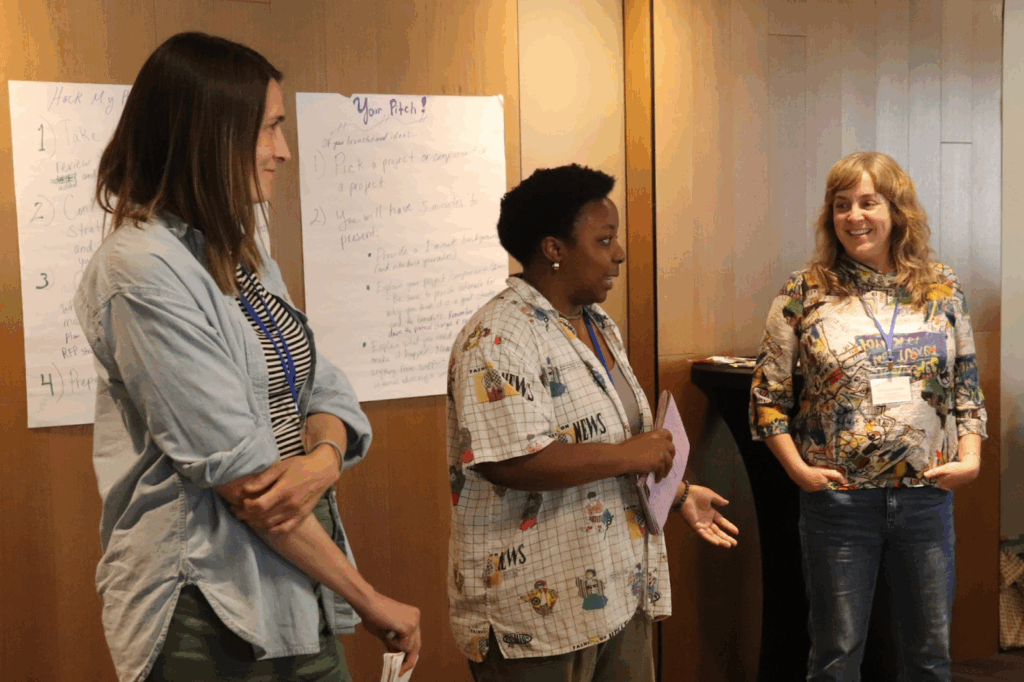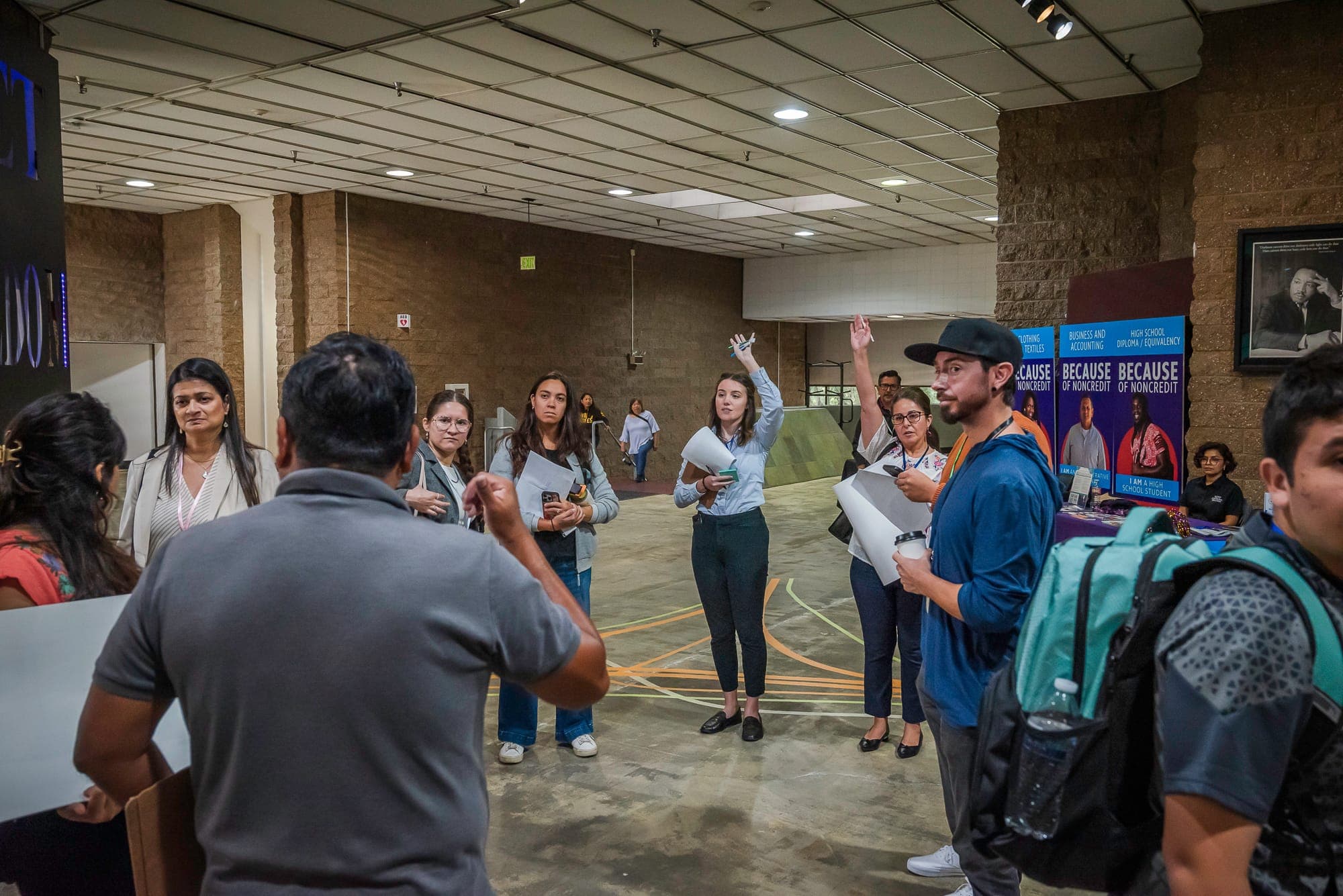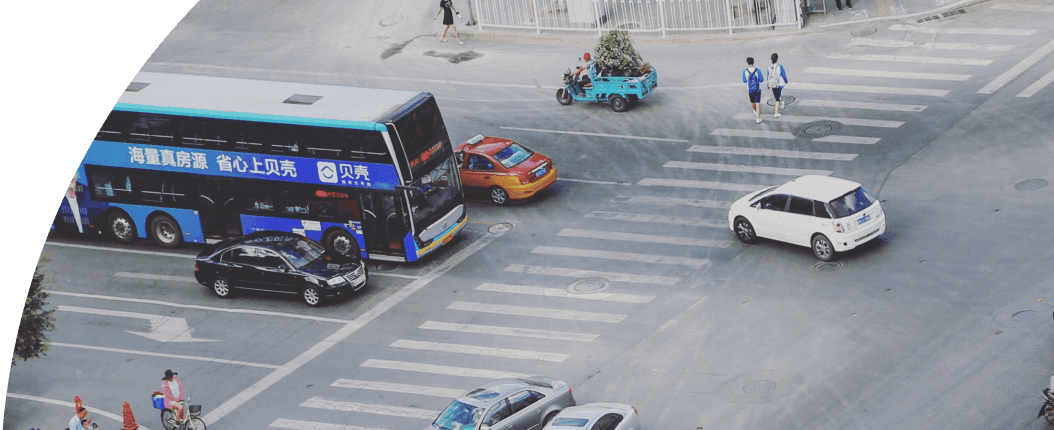
News
By Marian Liou, October 15, 2025
Metro, the metropolitan planning organization (MPO) for the greater Portland, Oregon region, is building on nearly a decade of work in community placemaking to more deeply integrate arts and culture into its planning practice. Through its Community Placemaking program and new agency-wide initiatives, Metro is demonstrating how creativity can support engagement, long-range visioning, and data justice. Smart Growth America’s Culture & Community Network (CCN) has given staff both inspiration and structure to explore how arts and culture can grow from a single program at an MPO toward broader integration agency-wide.

Background
Principal planner and community placemaking grant manager Dana Lucero’s path to arts and culture at Metro began through her leadership of the Community Placemaking program. Transitioning from a role in transit, she saw an opportunity in 2017 to repurpose a dormant funding pool into a grant program that invested in human and social capital. Dana has long believed in the arts as a way to spark public interest in planning, and the program gave her the chance to put that belief into practice.
Senior public affairs specialist Lakeeyscia Griffin joined CCN through her connection with Dana, building on her own support for the placemaking program. As a photographer, musician, and videographer in her personal life, Lakeeyscia describes this work as a bridge between her creative passions and her role at Metro. For Lakeeyscia, being part of CCN was “a no-brainer,” an opportunity to link personal creativity with professional practice.
Arts and culture efforts in planning and engagement
The Community Placemaking program was first conceived in 2016 and launched its inaugural grant cycle in 2017 with $100,000 awarded to six organizations. What started small has grown steadily, fueled by strong ties to socially engaged artists and supported by Metro’s agency-wide equity strategy.
Through this program, Metro has moved beyond treating artists as vendors to engaging them as collaborators. Over the years, artists have led storytelling projects, community gatherings, and creative processes that reframe planning issues in accessible and meaningful ways.
As Metro’s planning, development, and research communications and engagement manager, Molly Cooney-Mesker was struck by how the Community Placemaking program has shifted the dynamics of participation. During one virtual meeting, a Community Placemaking program grantee told her directly: “this is what real community engagement is.” For Molly, that moment made it clear that Metro’s commitment to engagement must include placemaking and other creative practices that help communities address issues in their own way.
Challenges along the way
Metro’s arts and culture efforts have not been without hurdles.
- Ensuring geographic representation across the region can be a challenge. While most placemaking applications come from Portland, Metro must distribute resources region-wide.
- Institutional processes can at times feel at odds with creativity, requiring staff to reconcile artistic and creative processes with the realities of structured, time-bound grantmaking and contracting.
- Accommodating capacity limitations and acknowledging imperfect processes are ongoing challenges. Recognizing that mistakes will be made, staff are committed and accountable to learning and improving continuously with each cycle or project.
As Lakeeyscia describes it, “these structures may feel diametrically opposed to the cultivation of arts, but they’re necessary so that when artists come in, they can do what they’re here to do.”
Lessons learned
Participation in CCN has reinforced several lessons for the Metro team:
- Start where the soil is fertile. Echoing City of Seattle Director of Arts and Culture Gülgün Kayim’s advice during the CCN convening, focus first on staff who identify as having a creative practice or are already eager to engage with arts and culture.
- Meaningful work is the baseline. Contracting and program structures must prioritize a purposeful, not transactional, experience for artists.
- Learning is ongoing. Each grant cycle, project, or experiment integrating arts and culture should build in reflection and adaptation.
- Be intentional about dedicating space for the work. Carving out time and permission to think creatively is essential in an environment where work responsibilities can occasionally feel overwhelming.
- CCN provided needed support for internal casemaking. The team also values the national perspective and network provided by CCN. Examples from other MPOs and regional planning agencies such as Boston, Atlanta, Seattle, and the Twin Cities offer evidence that strengthens Metro’s internal case for integrating arts and culture into planning practices.
Looking ahead
Bolstered by their participation in CCN, Metro is building on its Community Placemaking program to weave arts and culture into larger regional initiatives. In the Future Vision process—an 18-month, 50-year regional visioning effort—Metro has begun intentionally centering artists and culture-bearers. Staff have already interviewed local artists and are working with Subashini Ganesan-Forbes, a cultural leader and former Creative Laureate of the City of Portland, to design ways for artists to help guide Future Vision. Separately, Metro staff working on Safe Streets for All are exploring how arts can expand the concept of “data justice” by elevating qualitative stories and lived experiences alongside technical datasets. Additionally, the team is exploring the creation of an arts and culture cohort of internal staff who have a creative practice or who are interested in the arts and cultural strategies. The intention is for this group to meet regularly, hear from artists, and pilot small-scale experiments.
Metro’s story illustrates how a regional agency can move beyond a discrete grant program toward embedding arts and culture into many aspects of planning practice. By starting small and establishing a strong, proven foundation, learning from peers, and aligning with broader agency priorities, Metro is showing how creativity can expand the possibilities of regional planning.
Related News

© 2025 Smart Growth America. All rights reserved
Site By3Lane Marketing
















